Pesticide Basics
Advising customers about the correct pesticide is not always a simple task. The large selection offered to homeowners today can be confusing, and they often look to garden centers for answers. If your employees do not know the basics of pesticides they could loose sales or worse, misdirect customers toward ineffective or even dangerous products.
Luckily, assisting with good product selection does not require a vast knowledge of chemical classes, pest species or application methods. Today’s chemical packaging includes most of the information you will need for proper product selection, and what is not there can easily be found in resource books, on the Internet or at local universities. Bulletins and tip sheets, like this one published by The University of Florida, can be very helpful in this regard.
The first step in helping a customer select a pesticide is to listen closely to their questions. Make sure you accurately understand what is being conveyed. This is your opportunity to give good customer service, so don’t blow it by mis-diagnosing the pest. See this as an educational opportunity, when you can talk about purchasing high-quality plant material that is pest free and preventing future pest problems through the use of fertilizers and mulch to create an optimum growing environment.
There is a lot of information in the following article, and much of it has nothing to do with actually making the pesticide sale. As their main source of information, gardeners often look to their local garden center to provide a complete package of information, including how to use the pesticide, where to store it and how to dispose of it. Instead of giving a lecture at purchase, most of which will be lost in the customer’s rush to treat their prize rose bush, why not send them home with a how-to package on the life of a pesticide. Much of the information below has been formatted in easily reproduced bullet points that will make great information sheets. Not only will you establish yourself as an expert, not only will you demonstrate concern for your customer that goes above and beyond, you will also give them a permanent reminder of your garden center. And you thought your part was finished when you rung up the sale.
Basic Information
Purchasing a pesticide should be the last step in a series of control methods. Encourage customers to use mechanical controls such as barriers, traps and hand-picking or to try biorational materials such as oil, soap and biologicals before they start using pesticides. Additionally, customers should be educated about cultural means of control, such as selecting resistant plants and regular maintenance, that will prevent another disease/pest occurrence.
That said, there are often times when a disease or pest outbreak can only be controlled by a pesticide. When this is the case, you should always follow these basic guidelines when helping someone select a pesticide.
- Identify the pest to be controlled.
- If you have a choice in pesticides, always choose the less toxic pesticide.
- Before purchasing a pesticide, read the label. It is important to check if special protective equipment is needed to apply the pesticide safely and if you have appropriate application equipment. Also, consider hazards to the environment, pets and bees.
- Never buy more pesticides than you can use in one season.
Label Information
Every chemical that has been approved by the U.S. EPA has a detailed label to inform the user about safe handling and proper use of the pesticide. Labels are divided into several sections, but the following are always listed:
Chemical or common name.
Ingredients. Including both active and inert ingredients.
Type of formulation. Chemicals will be described as liquid, emulsifiable concentrate, wettable powders or dusts.
Directions for use. This section gives information on pests the product will control; how to mix and apply the product; when it should be applied; for what crop and site the product can be used; how much and how often to apply; and re-entry interval or days to harvest.
Warning and caution statements.These are statements that explain the hazards involved with use of the chemical. They include such things as types of hazards the product poses, ways in which the product is poisonous, and environmental and safety precautions you should take before use.
Signal words. Every pesticide label will have one of these terms on it: danger/poison, danger, warning or caution. These are called “signal words” because they indicate how acutely toxic the pesticide is to humans through oral, dermal or inhalation exposure.
The signal word danger with the word poison and a skull and crossbones on the label indicates that this is a highly toxic pesticide that is likely to cause acute illness through oral, dermal or inhalation exposure, causing death with as little as a few drops to one teaspoon. It may also be a severe eye or skin irritant. The word poison and the skull and crossbones will be printed in red. When the word danger appears alone on the label it signals that exposure to the pesticide may cause severe eye or skin irritation. Do not use products with the signal word danger around the home and garden.
The word warning signals that the pesticide is moderately likely to cause acute illness from oral, dermal or inhalation exposure or that it is likely to cause moderate skin or eye irritation.
The word caution signals you that the pesticide is slightly toxic or relatively nontoxic. It has only slight potential to cause acute illness from oral, dermal or inhalation exposure. Skin or eye irritation, if any, is slight. Try to choose products for use around the home and garden with the signal word caution.
Many labels will have a list of precautions that should be followed for safe use of the pesticide. Some examples of these precautions are: keep out of reach of children, remove and wash contaminated clothing before reuse, do not store with food or livestock feed, and wash with soap and water after handling.
Dos and Don’ts
Regardless of the pest or the pesticide, there are a few dos and don’ts that seem to universally apply, some of which are not just important for safety but for chemical efficacy.
- Do always read the label completely before mixing or applying any pesticide, paying particular attention to precautions and antidotes.
- Do remember that pesticides can be absorbed into the skin.
- Do check the label for the necessary protective clothing. As a minimum, always wear a long sleeved shirt and long legged pants. Wear shoes and socks (never wear sandals), and wear a wide brimmed hat.
- Do use the proper protective equipment. If the product label recommends or requires the use of a respirator, be sure you are using the type specified by the label and that it fits properly.
- Don’t use more pesticide than allowed by the label when mixing.
- Do avoid mixing excess pesticide; only mix the amount you will use for each application.
- Don’t eat, drink or smoke when handling pesticides.
- Do confine pesticides to the area being treated.
- Don’t breathe the sprays or dusts generated by pesticides or pesticide mixing.
- Don’t direct spray or dust stream into the wind when making a pesticide application.
- Don’t allow clothes to become saturated with spray or dust.
- Don’t use sprayers with leaking hoses or connections.
- Don’t use the mouth to siphon liquids from containers or to blow out clogged lines, nozzles, etc.
- Do remove clothes after using poisonous chemicals, and wash work clothes before using again.
- Do always wash with soap and water after handling any pesticides.
Pesticide Storage
Very seldom is all of a pesticide used as soon as it is purchased, especially those that are sold as concentrates. This means that many of your customers end up with poisonous chemicals sitting around their homes, garages and gardening sheds. And while storing chemicals is not all that difficult, there are a few key points about storing and disposing of pesticides that customers should know.
First, pesticides should always be kept in their original containers, as they are designed to handle the corrosive nature of the chemical. Pesticides should never be put in food or drink containers. Second, pesticides should always be stored in a safe place away from children and pets, where they can only be accessed by those familiar with their use. A locked area that is marked with a “Warning” sign is recommended as the safest way to store chemicals.
Third, pesticides should be stored in an area that is well ventilated, dry and cool. When pesticides are not stored properly, they can loose their effectiveness, change chemical compositions and even emit harmful fumes.
Disposing of Pesticides
Just because a pesticide container is empty does not mean that it stops being poisonous. The residue inside can leak out into landfills and injure curious animals. Besides, for most chemicals, it is not that difficult to properly dispose of the container; people just need to be made aware of the procedure.
First, make sure that your customers know never to pour pesticides down a drain or on an area that can harm people, animals or water. Triple rinsing is the industry standard for cleaning a container that held poisonous materials. But, there is a little more involved than just filling and emptying the container three times.
- Fill the container one-third full with water.
- Place cap on container and shake.
- Pour rinse water into the spray tank (see below).
- Repeat at least two more times.
- Apply rinse water with a sprayer to a site listed on the pesticide label.
After the pesticide container has been tripled rinsed, it should be disposed of by wrapping the empty container in newspaper and putting it in the garbage can for collection. If your community has a household hazardous waste collection program, old or unusable home and garden pesticides should be disposed of in the same manner through that program. Never reuse pesticide containers.
Signs of Pesticide Poisoning
It might sound pretty morbid, but the last thing you should make your customers aware of regarding pesticides is possible poisoning. You are not trying to Á scare them into not using the product, but they should be aware that it could seriously hurt or even kill them.
Most importantly, if someone is experiencing signs or symptoms of pesticide poisoning, they should get medical help immediately. Mild pesticide poisoning symptoms can be similar to common illnesses such as the flu. Poisoning, however, will usually have three or four signs or symptoms that will occur within twelve hours after exposure. See Figure 1, above, for some symptoms of pesticide poisoning, and check below for information about how to handle specific types of exposure.
If inhaled, move person to fresh air. If the person is not breathing, call 911 or an ambulance then give artificial respiration, preferably by mouth-to-mouth, if possible. Call a poison control center (800-222-1222) or doctor for further treatment advice.
If on skin or clothing, take off contaminated clothing. Rinse skin immediately with plenty of water for 15-20 minutes. Call a poison control center or doctor for further treatment advice.
If in the eyes, hold the eye open and rinse slowly and gently with water for 15-20 minutes. Call a poison control center or doctor for further treatment advice.
If swallowed, immediately call a poison control center or doctor or transport the person to the nearest hospital. Do not drink water. Do not administer anything by mouth or make the person vomit unless advised to do so by a doctor.
This article, number CIR 642, is one of a series published by the Pesticide Information Office at the University of Florida. Additional information about pesticides, as well as many other topics, can be found at http://edis.ifas.ufl.edu. This article was reprinted with permission.


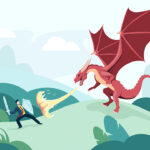



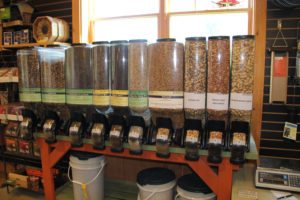
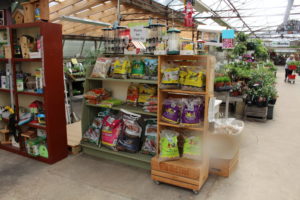
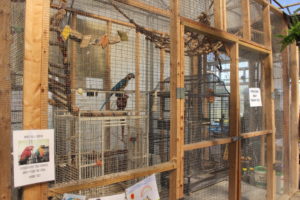

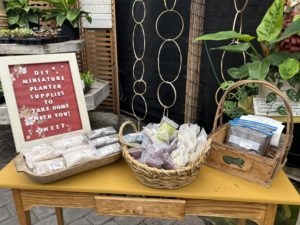
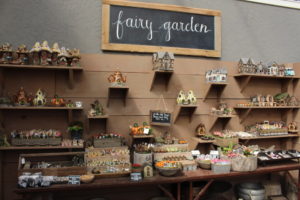

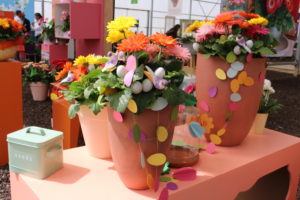


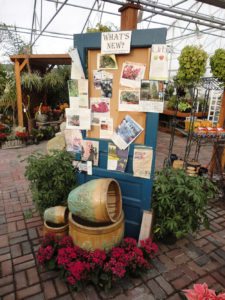
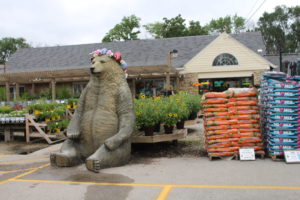
 Videos
Videos





